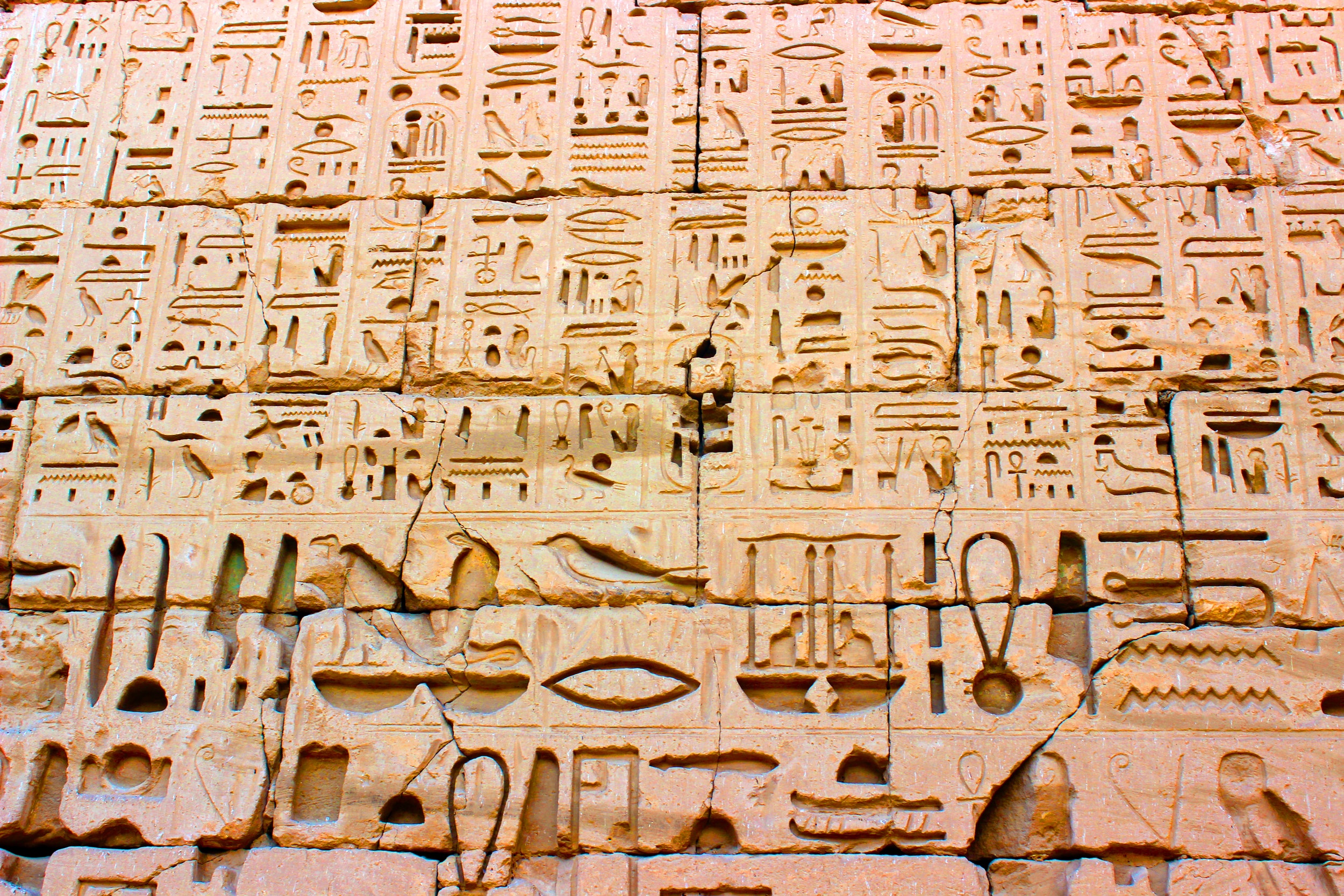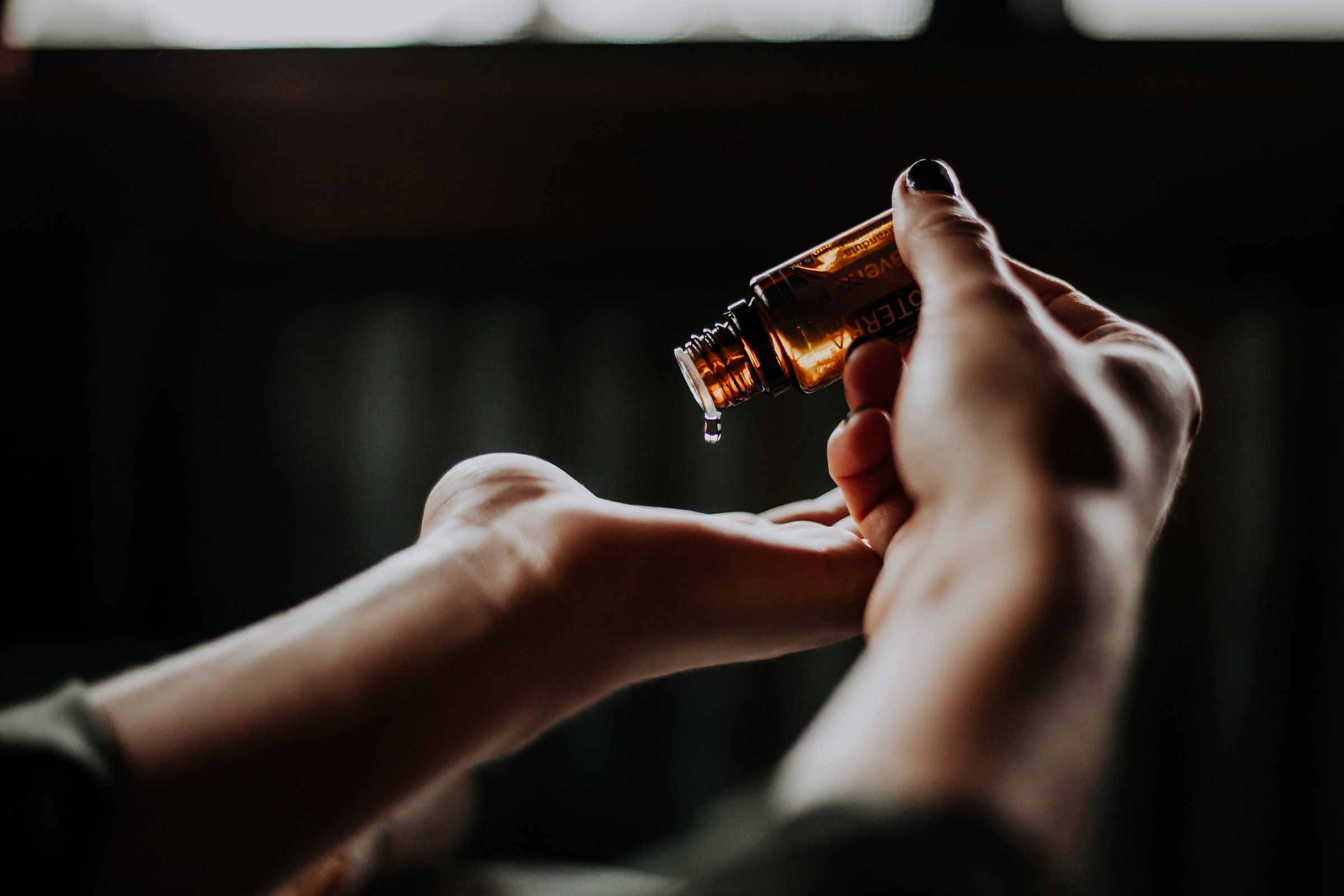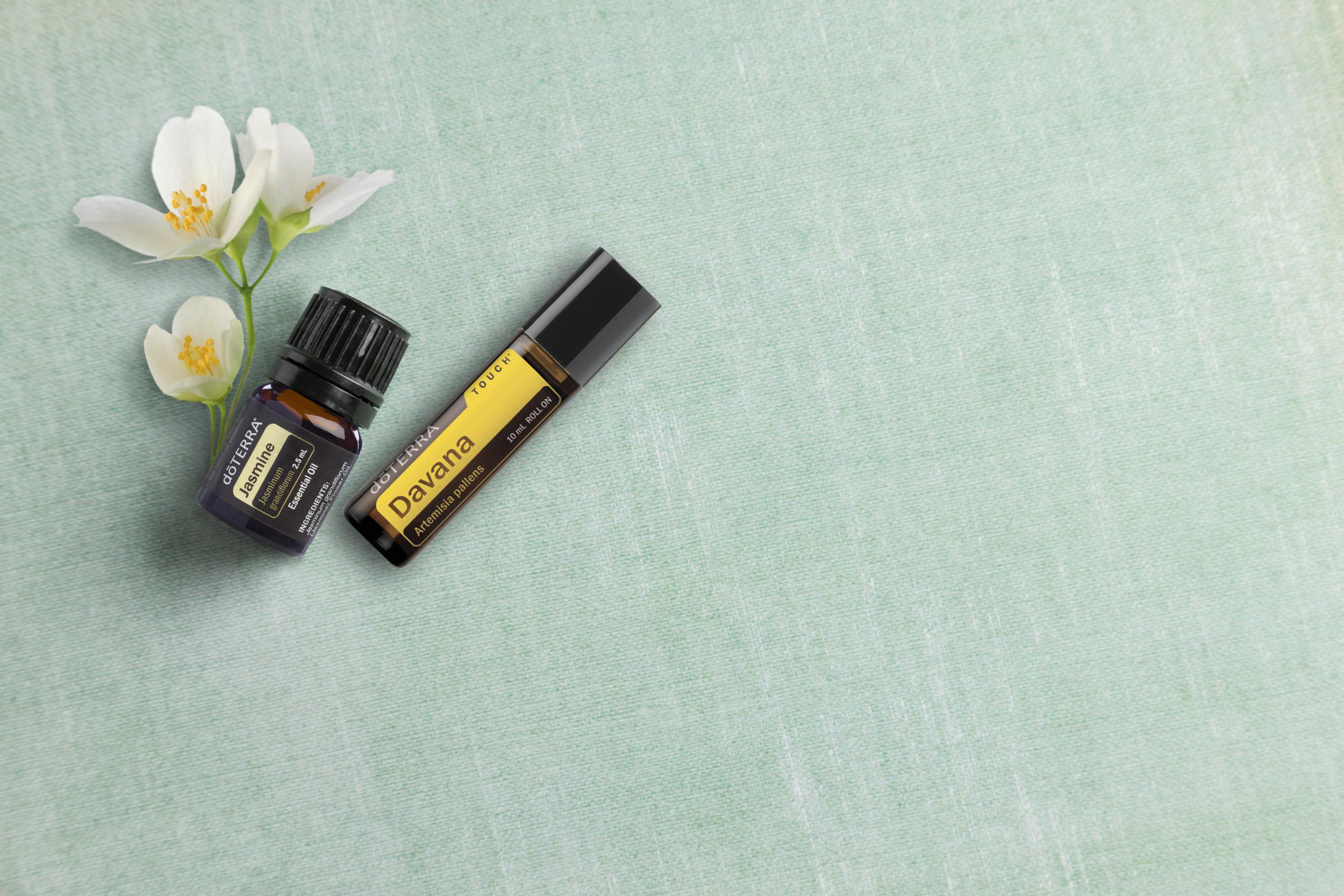THE HISTORY OF ESSENTIAL OILS IN ANCIENT EGYPT (4500 BC)
The use of essential oils began long before our time, in Ancient Egypt. Papyri found over the centuries attest to the existence of “plants of life” as early as 4500 BC.
Their use was sacred, with medicine linked to a belief in magic and symbols.
At that time, essential oils were used in several fields: medicine, perfumery, cosmetics and embalming. Perfume was part of the customs of seduction and religion, and its application as a balm was commonplace, and not exclusive to kings and the rich. Religion is closely linked to the use of essential oils in embalming, to bring people closer to the gods after death. Thanks to the maceration of strips in essential oils before covering the bodies, some were particularly well preserved for centuries.

The Egyptians practiced a crude form of distillation, using maceration and spinning. Plants were mixed with boiling water. After adding fabrics to this mixture, the Egyptians left the preparation to macerate for several days, so that the essences would soak into the textile. To recover them, the fabrics were wrung out by hand.
Some of the methods of administration used at the time have not changed. Generally taken as ointment or balm, cutaneous application was the most widespread. However, they were also used orally (pure or in herbal tea).
Egyptian civilization is considered the originator of essential oils. It influenced many cultures and civilizations, bringing its medical know-how to Greece, the Roman Empire and the entire Mediterranean basin.
THE HISTORY OF ESSENTIAL OILS IN THE MIDDLE EAST (4000 BC)
The use of essential oils in the Middle East dates back to 4000 BC, according to certain Mesopotamian tablets that have been found. Their use was essentially in perfumery, until the Egyptian influence in the medical field reached them.
Perfumes were created by macerating plants and then fumigating them in the home. At the time of the arrival of essential oils in the medical field, religious beliefs remained closely linked to their use. Indeed, as in Ancient Egypt, essential oils were used to “heal the spirit” before meeting the gods, and to prepare for rebirth. However, this use was not exclusive to the dying. Gradually, it became common to also use the power of plants to treat skin problems: itching, pimples…
THE HISTORY OF ESSENTIAL OILS IN CHINA (2800 BC)
When it comes to essential oils, the Chinese are no pioneers, but they are advancing knowledge for the general public, thanks to the publication of the first book on essential oil recipes. Pen Ts’ao, written by the emperor-god Chen Nong, lists almost one hundred plants that can be used in the form of essential oils.
Much later, the famous Chinese philosopher Confucius (551 to 479 B.C.) wrote the Treatise on the Bedroom, dealing with the care and sexual harmony brought about by the use of plants in the form of essential oils.
THE HISTORY OF ESSENTIAL OILS IN THE AMERICAS (1000 BC)
Essential oils on the “New Continent” are far from recent. The Inca, Maya and Aztec civilizations established the use of medicinal plants on American soil long before the time of the Crusades. American lands abounded in a wide variety of plants. Historians have been able to classify several hundred plants used by the Aztec tribe.
Even today, various Indian tribes use medicinal plants to treat a wide range of ailments. The uses are diverse: bodily relief, purification, development of the spirit, house cleaning, etc.
THE HISTORY OF ESSENTIAL OILS IN GREECE (300 BC)
The Greeks were first known for their immoderate use of essential oils in perfumery, in various forms (balms, pure oils, baths…). It was the conqueror Alexander the Great who imported essential oils to Greece, after his conquest of Egypt and discovery of the benefits of plants. What’s more, the creation of the port of Alexandria, a hub of the spice trade, gave Greece permanent access to the various plants that could be used in the form of essential oils.
Despite strong evidence of the origin of essential oils in Greece, Greek mythology attributes these discoveries to the divinities. Medicinal plants are therefore also used as offerings to the gods of Mount Olympus.
Hippocrates also contributed his knowledge of medicinal plants by writing the book Des aphorismes, listing some 230 plants and explaining his medical observations on their use. Next came Aristotle, whose works listed over 500 plants used in medicine. Finally, Theophrastus, a pupil of Aristotle, wrote the History of Plants, transcribing his observations on the forms, origins and possible uses of medicinal plants.
THE HISTORY OF ESSENTIAL OILS IN THE ROMAN EMPIRE (150 BC)
Thanks to the influence of Greece on the Empire, the Romans quickly became interested in consuming spices for their taste and fragrance. Like the Greeks, they made immoderate use of them, especially in solemn settings. What’s more, men became increasingly interested in the field of perfumery, hitherto the preserve of women. The “amorous seductive” virtues of essential oils were known throughout the Empire.
Much later, in the 1st century A.D., Dioscorides, an influential Greek physician in the Roman Empire, wrote a five-volume work entitled De materia medica, listing some 520 medicinal plants. This work remained the emblem of the world of essential oils until the Renaissance.
The History of Essential Oils after Christ
THE HISTORY OF ESSENTIAL OILS IN THE MIDDLE AGES
First of all, it’s important to remember that plants in the form of essential oils were not used, or used very little, in the early Middle Ages. Essential oils were believed to be evil products, used by witches. Nevertheless, the magic of plants generated immense interest. In 795, Emperor Charlemagne wrote a guide to the 88 plants needed for daily life (decoration, food…).
Medicinal plants, on the other hand, were reserved exclusively for monasteries and noble houses. At the time, the search for the universal remedy to become immortal was a priority, and this potion is said to have descended from the Gallic druids. At the time, medicine was very much tied to religion, with apothecaries and healers being former members of the clergy.
Interest in essential oils was revived during the Crusades, on the return to the Holy Land. Distillation became common practice, and anything could be distilled. Essences symbolize purification and the concentration of divine forces. High-quality essential oils produced during the Crusades were the basis of all remedies, thanks to their strong antibiotic power, necessary during the great epidemics of the time.
Interest grew during the reign of King Philippe Auguste, with the advent of the gantiers-parfumeurs. They introduced a new art: leather perfumery. This technique, which had arrived from Italy, quickly became part of French customs, so much so that Paris eventually dethroned Venice in the field of perfumery. But it wasn’t until the Renaissance that glove-makers and perfumers had a real monopoly on essential oils.
In the world of medicine, it was Paracelsus who reinstated the power of essential oils, with the theory that the different parts of plants resemble a part of our anatomy. This physical link would mean that, for example, the leaves of a plant would heal problems linked to the respiratory system. In another example, tree resin would heal any wound.
THE HISTORY OF ESSENTIAL OILS IN THE MIDDLE-EASTERN RENAISSANCE
Before looking at the advent of essential oils in the European Renaissance, we need to take a look at the Muslim world, more advanced than our continent in terms of aromatherapy.
Avicenna, a Persian physician and philosopher, further advanced the distillation method with the invention of the serpentine. The serpentine is a thin tube that enables aromatic vapors to be rapidly cooled to obtain an aromatic liquid. Prior to this invention, steam was cooled by wet sponges, resulting in a huge loss of liquid. The coil is still in use today.
THE HISTORY OF ESSENTIAL OILS DURING THE EUROPEAN RENAISSANCE
Essential oils were very popular in Europe during the Renaissance. In France, glove-makers and perfumers were famous. Finance Minister Colbert (1619 – 1683) even went so far as to offer them a monopoly on the sale and distribution of perfumes.
The European Renaissance was the creative period for essential oil diffusion. The first diffusers were called “pomanders”, because their spherical shape was reminiscent of an apple. Diffusion was reputed to disinfect homes and people. In times of plague, pomanders were needed to stop the epidemic. The effective plague-fighting mixture was revealed by four robbers.
As the story goes, four thieves smeared their bodies with a particularly anti-infectious eau de vie, composed of eight essential oils (wormwood, clary sage, rosemary camphor, peppermint, clove, cinnamon, garlic and lavender aspic). They then went from house to house stealing the plague victims. When they were arrested, they were able to secure their release by offering the world the recipe for their potion.
THE HISTORY OF ESSENTIAL OILS AFTER THE FRENCH REVOLUTION
powerful scents, renewed every day. This reputation led to the disappearance of perfume during the French Revolution and Terror, as it had become a symbol of the French aristocracy.
By the end of this period, French mores had shifted, and changes in fragrances were observed. Whereas a pronounced taste for strong, heavy scents was commonplace before the Revolution, habits now tended towards light, sweet and fruity fragrances. The bourgeois milieu reappropriated perfumes, using them to excess: in the toilet, on stationery, on animals…
Glove-makers and perfumers reappeared in the entourage of the wealthiest people, following them on a daily basis to offer them different fragrances throughout the day. It was also during this period that perfume houses came into their own. Aesthetics were at the heart of French high society’s preoccupations.
The rediscovery of essential oils in the 20th century
THE HISTORY OF ESSENTIAL OILS IN THE MODERN AGE
From the end of the Revolution and the Terror (1794), until the 20th century, no significant discoveries were made in aromatherapy.
It wasn’t until the “unfortunate” accident of the father of aromatherapy, René-Maurice Gattefossé, in 1910, that the benefits of essential oils for human health were rediscovered.
With a keen interest in perfumery, René-Maurice joined the family business and became interested in the scents of plants in effluvia.
On July 25, 1910, René-Maurice Gattefossé was in his laboratory when an explosion occurred. Burned on the head and arms, he thought nothing of it and dipped his hands in a bucket of True Lavender essential oil. The soothing effect was immediate, and healing took place quickly and effectively. Following this “experiment”, he became increasingly interested in the power of essential oils, outside the field of perfumery.
His first book, Aromathérapie, was published in 1931. This was the first time the term was used. It was also the first book to relate the structures and activities of each essential oil to its biochemical components.
Despite excellent research work demonstrating the unprecedented effectiveness of essential oils in the medical field, René-Maurice Gattefossé’s discoveries did not enjoy the success they deserved. Indeed, this was also the era of the creation of synthetic chemicals. Competition between laboratories was fierce. What’s more, poor knowledge of the uses of essential oils undermined their effectiveness in the eyes of the general public.
Today’s aromatherapy also owes a great deal to physician Jean Valnet. His research, and his willingness to share the work of René-Maurice Gattefossé, led to greater credibility for aromatherapy in French medicine.
In addition, he was instrumental in discovering the anti-infectious properties of essential oils, which were needed during the Indochina war. Soldiers’ wounds were dressed with strips soaked in essential oils (a reminder of ancient Egyptian practices). These practices also demonstrated the weakness of antibiotic therapy: bacteria become accustomed to this type of medicine, effectiveness diminishes more and more, and it becomes necessary to use synthetic molecules that are increasingly harmful to our organism. Essential oils are the way to treat without attacking the body.
Aromatherapy reappeared in France, and soon proliferated throughout the world, especially in Western countries such as Germany, England and the United States… In 1964, Dr. Jean Valnet’s Aromathérapie: traitement des maladies par les essences des plantes was a worldwide success. In it, he explains the dosage of each essential oil for many ailments.
Jean Valnet also developed a method for assessing the antimicrobial activity of essential oils. This technique has already been invented for the evaluation of synthetic antibiotics. It’s the same process, but with a different product.
If René-Maurice Gattefossé is considered the father of modern aromatherapy, it is surely thanks to the work of Jean Valnet that the practice is so popular today.
Over the past thirty years, aromatherapy has become accessible to all, and knowledge of the subject continues to grow. In 1975, French biochemist Pierre Franchomme founded the first laboratory specializing in essential oils. Thanks to his work, the biochemical specificities of each oil are easier to identify. The aim of his research was to reduce the therapeutic and toxic problems and side-effects associated with the use of essential oils.
Dominique Baudoux, a Belgian pharmacist, took over the management of Pierre Franchomme’s laboratory in 1991. He offers consumers ready-to-use essential oil synergies. He also transforms essential oils to make them easier to use (capsules, shampoos, frictions…).
To improve the information available about the world of essential oils, and to limit the risks of use, Dominique Baudoux decided to specialize in teaching and publishing books for everyone, from the novice to the most specialized in aromatherapy. In the 1990s, he also opened the first aromatherapy school. His role was to develop techniques and information to protect consumers and make them responsible in their use of essential oils.
Today, aromatherapy is widespread throughout the world, and knowledge of its use is precise. Many laboratories are also working on certified organic aromatherapy. Aromatherapy is surely one of the most natural techniques available for treating ailments of the human body. It is as effective in prevention as in cure.




